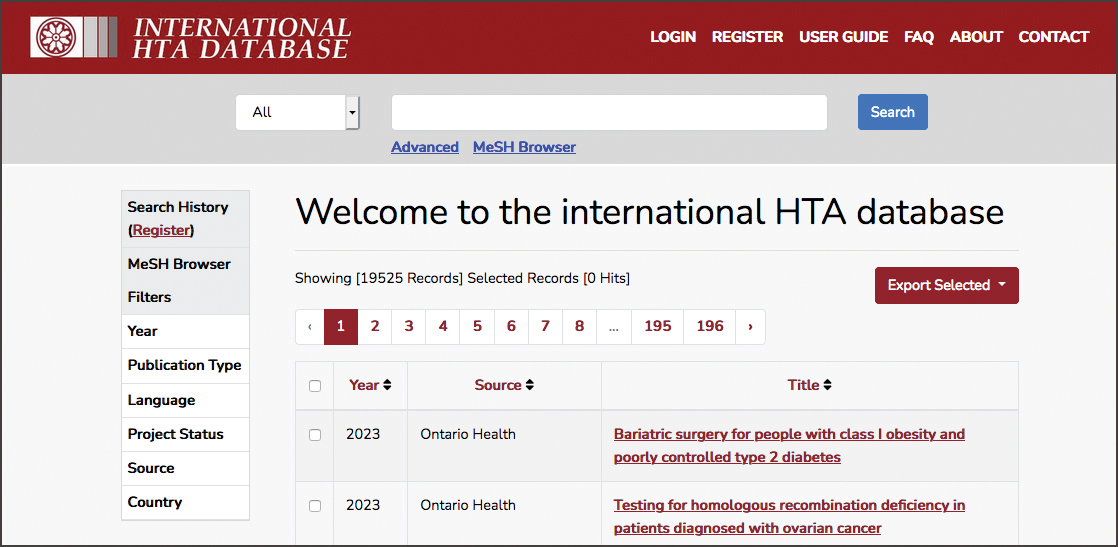Evidence-Based Practice Group answers clinical questions
A critical component behind WorkSafeBC’s mission to provide workers with appropriate medical treatment and rehabilitation on their road to recovery and return to work is assessing the breadth of medical and health technology information available. Within the greater Policy, Regulation, and Research Department, a dedicated team specializes in just such medically relevant topics.
The Evidence-Based Practice Group, headed by Dr Craig Martin, was established in 2002 and is mandated to address the many medical and policy issues that WorkSafeBC officers and clients—such as surgeons, medical specialists, and rehabilitation providers—deal with on a regular basis. Examination of these medical and policy issues is conducted by Evidence-Based Practice Group members, who apply established techniques of critical appraisal and evidence-based medicine to evaluate health technologies, clinical treatments, assessments, diagnostic procedures, and any other such questions that arise during the provision of services to injured or occupationally diseased workers. Sometimes, less complex queries may be resolved through direct discussion with one of our group members, or we can make a referral for the inquirer to other relevant sources of information that address the inquiry.
For inquiries that require investigation and review, the Evidence-Based Practice Group uses a systematic review approach and also seeks cross-divisional input to reflect the diverse nature and impact of these reviews, as necessary.
A typical review process may look something like this:
- A request for review of a topic is submitted.
- If the topic is deemed appropriate for review, a group member is assigned as the owner of the topic.
- The topic owner then applies WorkSafeBC’s established, systematic literature-review process, including:
- Refining a focused research question.
- Developing a literature research protocol and identifying any other relevant avenues of information.
- Compiling a final report that outlines the review process, the literature search and analysis results, and a discussion/summary of the findings.
The final report is then provided to the original inquirer. Additionally, as part of our greater goal of reinforcing WorkSafeBC’s overall mandate of worker support and strengthening awareness of occupational health and safety issues, our reports are made accessible to our wider public audience. Accessing our published reports on WorkSafeBC’s website is easy—our reports are housed at www.worksafebc.com/en/evidence. There, users can review a list of our reports or use the search function to locate relevant reviews and topics.
- In the “Systematic reviews and Rapid reviews” section, you will see a short list of topics.
- To access a complete list of topics, click the “More systematic reviews” link.
- If you are searching for a specific topic, enter your keywords into the “Search Forms & Resources” search bar. The results will be limited to our evidence-based practice publications.
You can also access our reviews from the International Network of Agencies for Health Technology Assessment (INAHTA) database (https://database.inahta.org). This is a freely available international repository of bibliographic information about ongoing and completed health-technology assessments commissioned or undertaken by members of INAHTA and other health-technology assessment organizations.
The Evidence-Based Practice Group is always ready to answer queries regarding our work. Comments and questions may be sent to EBPG@worksafebc.com.
—Cindy Lau, MA
Policy Analyst, Policy, Regulation and Research
WorkSafeBC

You can also access our reviews from the International Network of Agencies for Health Technology Assessment database: https://database.inahta.org.
hidden
This article is the opinion of WorkSafeBC and has not been peer reviewed by the BCMJ Editorial Board.
 |
| This work is licensed under a Creative Commons Attribution-NonCommercial-NoDerivatives 4.0 International License. |
